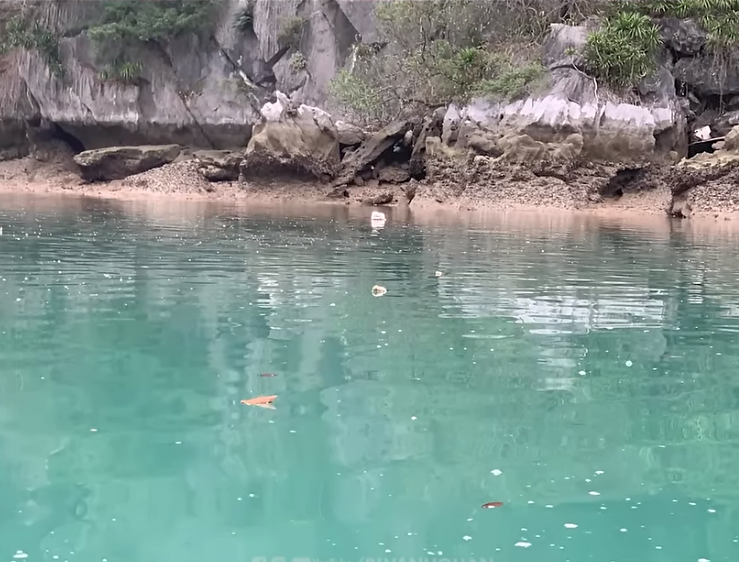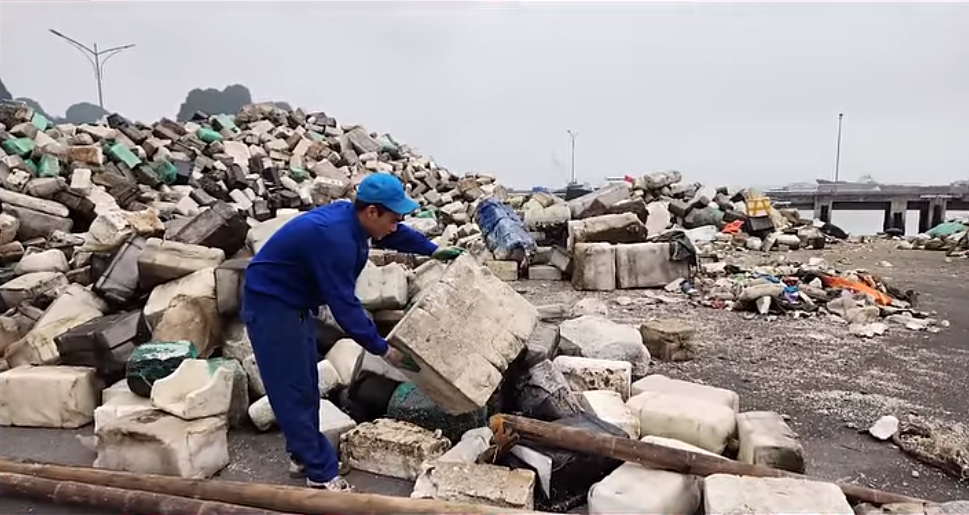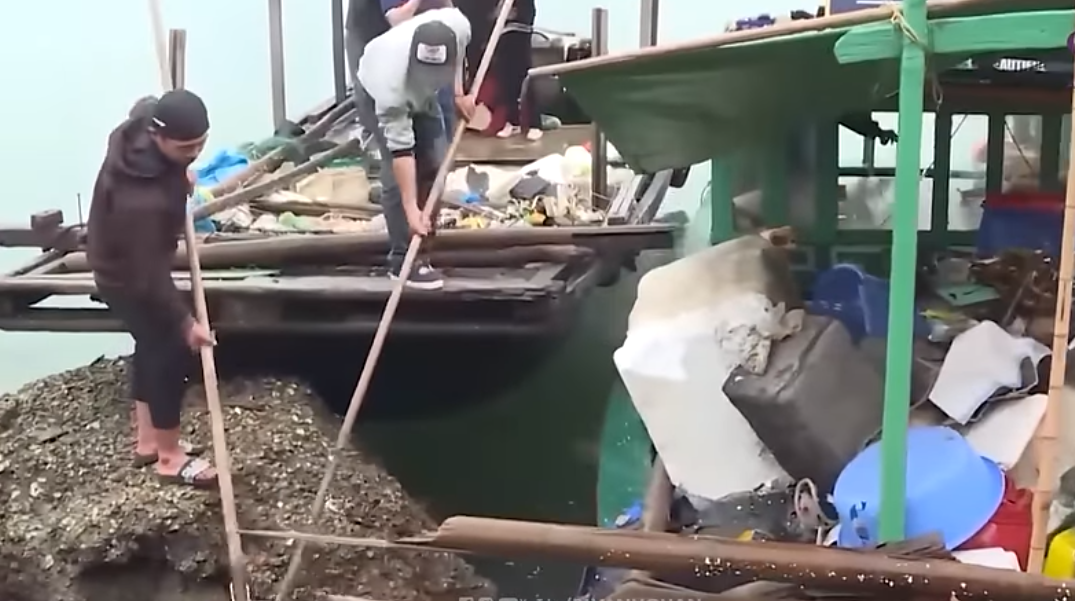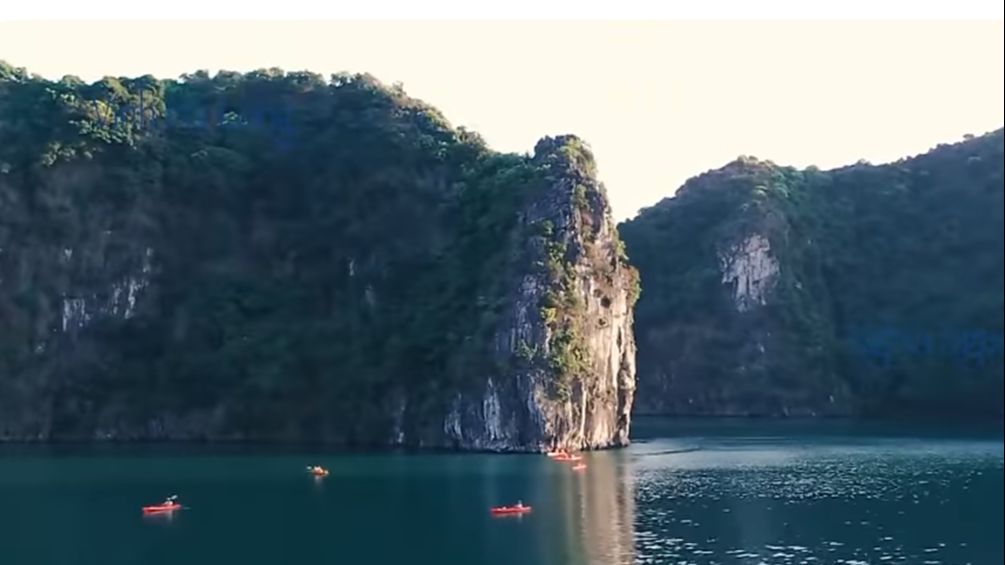Ha Long Bay, a precious gem of our country, a masterpiece of Mother Nature. Its beauty is like a multi-colored painting with a vast sky and endless rivers. More than 1000 rocky islands within are caves with many miraculous shapes creating unique highlights. This island connects to that island with different shapes, making people overwhelmed by the creativity of nature. With its unique values, Ha Long Bay has been recognized twice by UNESCO as a World Natural Heritage, not only for its aesthetic value but also for its significant geological and geomorphological value, which is crucial for the local tourism development.

By 2011, Ha Long Bay was once again honored to be one of the seven new natural wonders of the world, affirming the beauty and value of Vietnam's landscapes. As of September 2023, Ha Long Bay was once again recognized by UNESCO as a World Natural Heritage, so it is no surprise that Ha Long Bay has become a must-visit destination for tourists coming to Vietnam. In just the first three months of the year, the World Natural Heritage site of Ha Long Bay welcomed over half a million international tourists, and we are proud of Ha Long Bay and hope that foreign visitors can also admire and be amazed by the beauty of this unique wonder.
But when did such feedback from international tourists start to appear? An article by an Australian tourist who visited Lan Ha Bay and Ha Long Bay at the end of February. After the trip, the female tourist shared her experience at these two destinations on a famous travel group. She said that Ha Long Bay is a beautiful tourist destination in Vietnam if it weren't for the trash everywhere, the sea surface dirty with oil slicks, it was terrible.
This sharing became a hot topic on social media, with many other comments from foreign tourists saying they also had similar experiences when visiting Ha Long Bay. "I agree with the opinion, I didn't even dare to swim, it's really sad that I even saw syringes floating. So disappointing. However, Lan Ha Bay is very beautiful and clean. I guess the farther you go, the fewer people, the less pollution." "I'm shocked because I just went there last week, I stayed in Vietnam for 5 days, Ha Long Bay left me with the best impression when we arrived, it was clean and beautiful, there was no trash at all, just a few days later it was dirty like this, I can't believe it." "When my girlfriend and I went on an overnight cruise, the next morning they dumped all the trash from the boat into the sea. I love Vietnam, but they have no awareness of environmental pollution, the beaches are always flooded with trash, not to mention the roads."

In light of these comments, many foreigners planning to visit Ha Long Bay have turned back. In fact, this is not the first time Ha Long Bay has been complained about by foreign tourists due to the trash-filled sea affecting the landscape and the experience of visitors when touring the bay. Those in the tourism industry are used to feedback from guests like Ha Long Bay is very beautiful but filled with trash, making them think about whether to return to the bay again. To the extent that in March 2023, the World Heritage Center had to send a document to the member country Vietnam responding to the current status of the preservation of the World Natural Heritage Ha Long Bay, which included letters from international tourists reflecting the excessive floating trash in the bay affecting the quality of their travel experience.
In November 2023, the American travel magazine Fordor travel ranked Ha Long Bay on the no list, a destination that tourists need to reconsider in 2024 due to waste issues. Not only international tourists but many domestic tourist groups have also continuously reported on the trash situation surrounding Ha Long Bay. Many tour guides and tourists have called the hotline to report the situation, and even many bloggers and TikTokers have made clips reviewing the trash in the bay, attracting many views and comments, which is truly sad for Ha Long Bay and embarrassing for the country's tourism. The management board of Ha Long Bay has repeatedly mobilized and called for thousands of people along with hundreds of vehicles, spending tens of billions of dong to collect trash in Ha Long Bay and Bai Tu Long Bay, but the trash situation still remains overwhelming in the bay.

The image you are seeing is a mountain of trash piled up from Ha Long Bay, which is in the process of rotting and stinking. A trash collector here said that there is too much trash, with about 15 trucks continuously transporting trash to the factory every day. Previously, there was only one trip per day, but the amount of trash needing to be processed was not significant.
But why is this happening, who is causing this marine environmental issue, is it due to excessive tourism?
Of course, tourism activities also play a certain role in causing this situation. A basic study in 2020 estimated that 28,287 tons of plastic waste is discharged into Ha Long Bay annually, of which 5,272 tons float out to sea. On average, each tourist generates from 5 to 10 plastic bags, two to four plastic bottles, milk cartons, and other single-use plastic items per day. A total of 34 tons of waste is generated daily from tourism activities, which not only affects the travel experience but also impacts the fragile ecosystem.
There used to be 234 types of coral in the bay, but now only half remain, but tourism is not the only culprit causing these ugly images. When looking at the images of the mountains of trash pulled up from the bay, you must also notice that a huge amount of this is foam, with an average of about 2,000 cubic meters of foam collected daily floating on Ha Long Bay, and this number is certainly not caused by tourism. In fact, it is due to fishermen's poor awareness during the dismantling of oyster farming cages, who intentionally dump trash into the sea, causing Ha Long Bay to be flooded with trash.
In Ha Long Bay, there are many illegal aquaculture constructions that the local authorities have requested to dismantle and relocate, but when the residents carry out the dismantling and relocation, there is no one to check, supervise, or urge them, allowing them to do it spontaneously, leading to no one taking responsibility for collecting trash on-site and just dumping it into the sea quickly. As a result, the management board of Ha Long Bay has to strengthen human resources to collect foam, but many workers collecting trash in the bay said they cannot clean up all the trash because foam is everywhere; they can only collect large pieces, while countless small fragments still have no specific plan for collection.

In addition, the water in the bay is also polluted because some old residential areas along the shore have to discharge wastewater directly into the sea due to a lack of treatment systems, and wastewater also comes from some outdated fishing vessels operating in the bay. Trash also comes from leaves and branches from the 5,000 special-use forests on the rocky islands that are blown down to the sea by storms and strong winds. The management board of Ha Long Bay affirms that Quang Ninh does not neglect environmental protection; when the amount of trash increases, there will be campaigns to collect and process trash in a timely manner. Ha Long City has also implemented a drainage and wastewater treatment project to ensure that 100% of domestic wastewater is treated to meet standards before being discharged into the environment. Wastewater treatment stations in other localities along Ha Long Bay are being expedited.
Currently, 100% of tourist boats operating in Ha Long Bay have wastewater and oil treatment systems; newly built tourist boats must install wastewater treatment systems to meet Vietnam's national regulations before operating in the bay. In fact, waste, especially plastic waste, is not only a problem specific to Ha Long but many famous destinations like Nha Trang, Phu Quoc, Mui Ne, and Da Nang also face this issue. On many international forums, tourists complain that waste is a pressing issue in Vietnam in general, from the sea to the land.
According to data from the Institute for Tourism Development Research before COVID-19 in 2019, 85 million domestic tourists generated nearly 61,000 tons of plastic waste, while 18 million international visitors produced over 55,200 tons. The total amount of plastic waste generated by tourists in 2019 was 116,000 tons, and it is estimated that this number will reach nearly 340,000 tons by 2030. Cleaning up trash is just the tip of the iceberg; the important thing is that the management board of Ha Long Bay must find the root causes and address them, such as investigating, calling for reminders, and imposing heavy fines on those who litter. If we already have strict policies for those who drink alcohol but still drive, then we should have similar policies for those who litter carelessly.
Vietnam's tourism needs to start thinking sustainably from small but significant things like cleanliness, no plastic waste, and then move on to larger national strategies such as preserving natural landscapes, harmonizing development with a long-term vision, centering on natural landscapes, heritage, people, and culture to satisfy tourists while ensuring a better life for local people, continuously elevating the heritage without begging for it.
